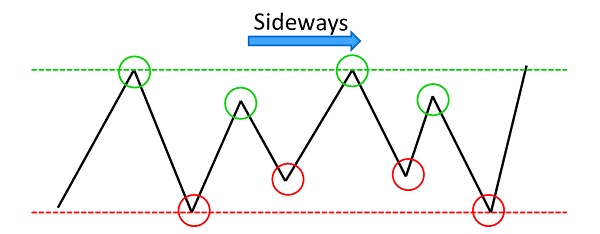5 Tips for Successful Forex Trading from Rayner Teo
The many forex trading tips that have been delivered at various seminars make beginner traders have little trouble following which trading lessons are the best. Plus, the various types of indicators make traders confused which one to use, starting from RSI, Fibonacci, MACD, and many more. They then wonder which of the many tips that have proven successful to be applied in starting trading.
This then made Rayner Teo, a successful trader and founder of Singapore-based TradingwithRayner, share tips on forex trading that have been proven to be "effective" to implement. Consider the following tips:
1. The longer the range of the market, the harder the price to break.
When markets are ranging, note that the longer Support and Resistance that fortifies price movements, the more valid these limits are. From this, you can be more sure to make the Resistance Support as an open position reference, or determine the Stop Loss and Take Profit targets.
2. Sideways conditions can be traded if limited by a clear price range.
In this case, the price oscillates or moves within a fixed range between the horizontal Support and Resistance levels. To find out whether sideways conditions are worth trading or not, it can be seen by "zooming out", or seeing price movements at a higher time frame.
Sideways
(Also read: Indicators that Work Well in the Sideways Market)
Does the market seem to be clearly trending, either an uptrend or a downtrend? If it doesn't look trending, then the price moves sideways. If sideways, then determine whether the price moves in a clear range, or moves sideways but is not choppy. In choppy conditions, you should not trade because it is not recommended.
3. Take the opportunity to enter when there is low volatility.
Low market volatility actually benefits traders, because it usually makes markets move ranging (sideways). From DailyFX research, many traders gain profits from this condition, especially if low volatility occurs in a full day. This is because the Support and Resistance levels tend to be strong and consistent, thus smoothing the buy strategy on Support or sell on the Resistance, which is commonly called a pullback strategy or buy low sell high. However, it is also important to note that the entry in very low volatility conditions is also best avoided, for example during Christmas and New Year's Celebrations.
4. Trading with breakout techniques.
Breakout is a condition of price movements that can break the Support or Resistance limits. Many traders believe that they can get maximum profit from the strong trend conditions. If you want to trade breakout during a Downtrend, first determine the Support level, then the lowest (current) level. If the Downtrend is strong, then the price will definitely form a new low level, so that the Downtrend can continue. The most effective technique for Entry Breakout in this situation is to use a Pending Order, which is Sell Stop or sell below the current market price. The entry level must be determined below the current lowest level.
USD / JPY Sell Stop
As for Breakout during Uptrend, look for the last Resistance and High level. Then use the Pending Order Buy Stop to open a buy order above the current price.
5. Know the best signal position to open position.
Higher Lows leading to the Resistance indicate a strong signal to buy. At this position, buying power weakens while selling power strengthens. When traders already assume the current price level is too high, they will tend to end the buy action by taking profit-taking.
Conversely, Lower Highs that lead to Support means weak signals to sell. This is because the selling power weakens, while purchasing power strengthens. Pressure that is too large on the bullish side causes the price to potentially strengthen. As a result, when it touches support, prices will rise rapidly.
This then made Rayner Teo, a successful trader and founder of Singapore-based TradingwithRayner, share tips on forex trading that have been proven to be "effective" to implement. Consider the following tips:
1. The longer the range of the market, the harder the price to break.
When markets are ranging, note that the longer Support and Resistance that fortifies price movements, the more valid these limits are. From this, you can be more sure to make the Resistance Support as an open position reference, or determine the Stop Loss and Take Profit targets.
2. Sideways conditions can be traded if limited by a clear price range.
In this case, the price oscillates or moves within a fixed range between the horizontal Support and Resistance levels. To find out whether sideways conditions are worth trading or not, it can be seen by "zooming out", or seeing price movements at a higher time frame.
Sideways
(Also read: Indicators that Work Well in the Sideways Market)
Does the market seem to be clearly trending, either an uptrend or a downtrend? If it doesn't look trending, then the price moves sideways. If sideways, then determine whether the price moves in a clear range, or moves sideways but is not choppy. In choppy conditions, you should not trade because it is not recommended.
3. Take the opportunity to enter when there is low volatility.
Low market volatility actually benefits traders, because it usually makes markets move ranging (sideways). From DailyFX research, many traders gain profits from this condition, especially if low volatility occurs in a full day. This is because the Support and Resistance levels tend to be strong and consistent, thus smoothing the buy strategy on Support or sell on the Resistance, which is commonly called a pullback strategy or buy low sell high. However, it is also important to note that the entry in very low volatility conditions is also best avoided, for example during Christmas and New Year's Celebrations.
4. Trading with breakout techniques.
Breakout is a condition of price movements that can break the Support or Resistance limits. Many traders believe that they can get maximum profit from the strong trend conditions. If you want to trade breakout during a Downtrend, first determine the Support level, then the lowest (current) level. If the Downtrend is strong, then the price will definitely form a new low level, so that the Downtrend can continue. The most effective technique for Entry Breakout in this situation is to use a Pending Order, which is Sell Stop or sell below the current market price. The entry level must be determined below the current lowest level.
USD / JPY Sell Stop
As for Breakout during Uptrend, look for the last Resistance and High level. Then use the Pending Order Buy Stop to open a buy order above the current price.
5. Know the best signal position to open position.
Higher Lows leading to the Resistance indicate a strong signal to buy. At this position, buying power weakens while selling power strengthens. When traders already assume the current price level is too high, they will tend to end the buy action by taking profit-taking.
Conversely, Lower Highs that lead to Support means weak signals to sell. This is because the selling power weakens, while purchasing power strengthens. Pressure that is too large on the bullish side causes the price to potentially strengthen. As a result, when it touches support, prices will rise rapidly.



Komentar
Posting Komentar